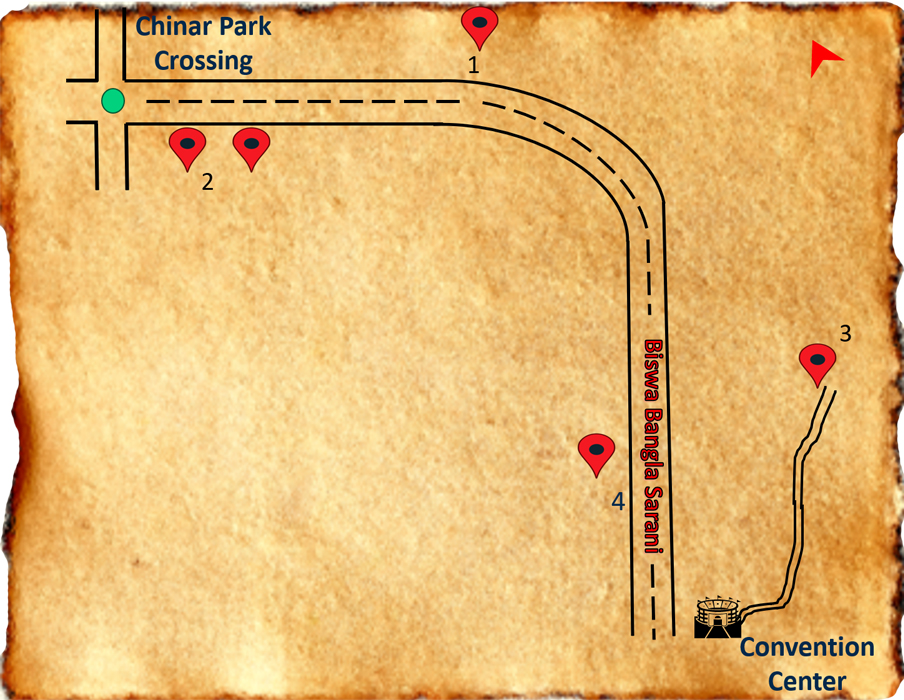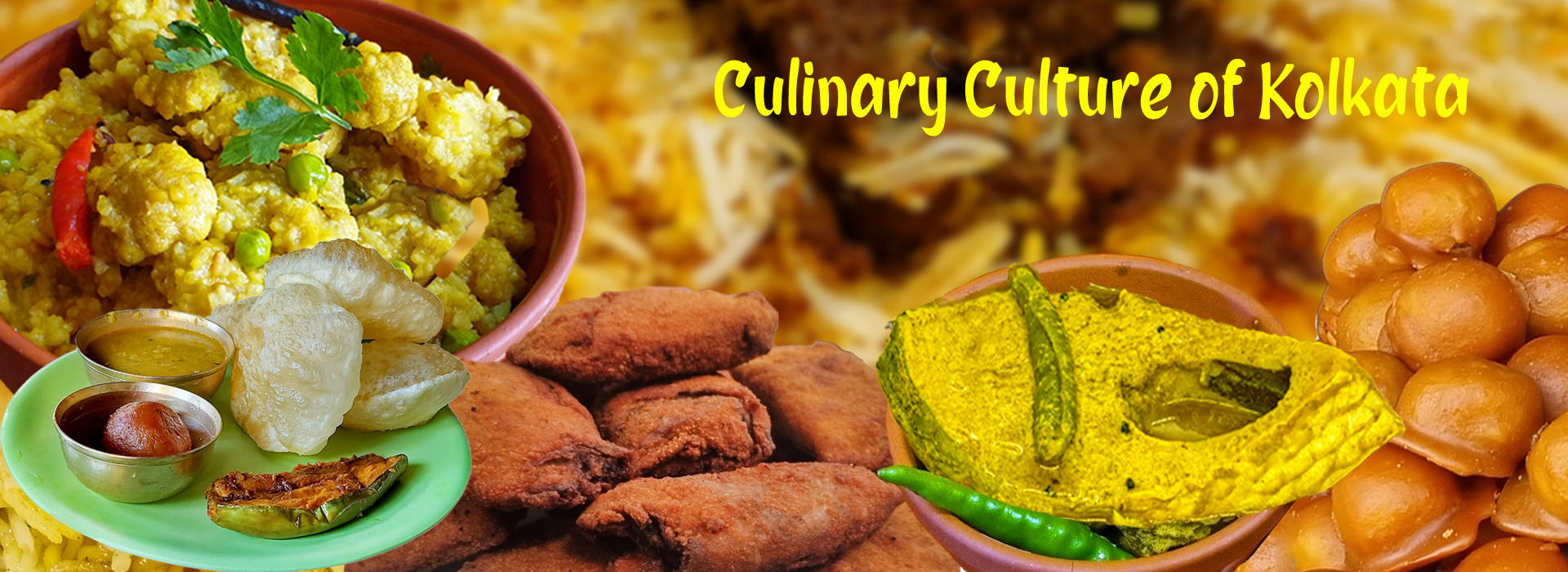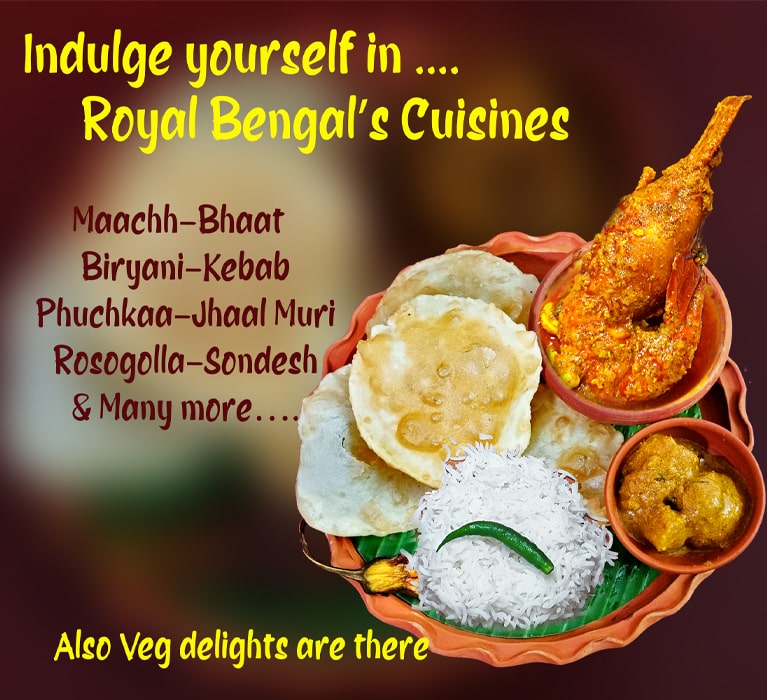
The Royal Bengal Cuisines
Kolkata has an eclectic range of cuisines. Starting from the classic Maachh- Bhaat (fish & rice), the gastronomic delights reach the climax with the trademark Kolkata Biryani adorned by the humble potato (Aloo).
The footpaths and gullies of Kolkata see vendors of “street food” jostling for space. The mouth- watering phuchka, jhaal muri, and tele bhaaja (deep fried chops) are some of the more popular street foods.
Since the Colonial era, chops and cutlets have been a part of Bengal’s food habit. Be it mutton chop or prawn cutlet or Mughlai paratha or kathi roll- Kolkata has it all.
Bengal’s love affair with sweets is known nationwide. One’s experience of the Bengali cuisine would be incomplete without a taste of the quintessential rosogolla and mishti doi!
Aamra bhalobasi khaoate
So, come and seduce your tastebuds with the gastronomic delights of Bengal!
Kolkata- Our food, your palate
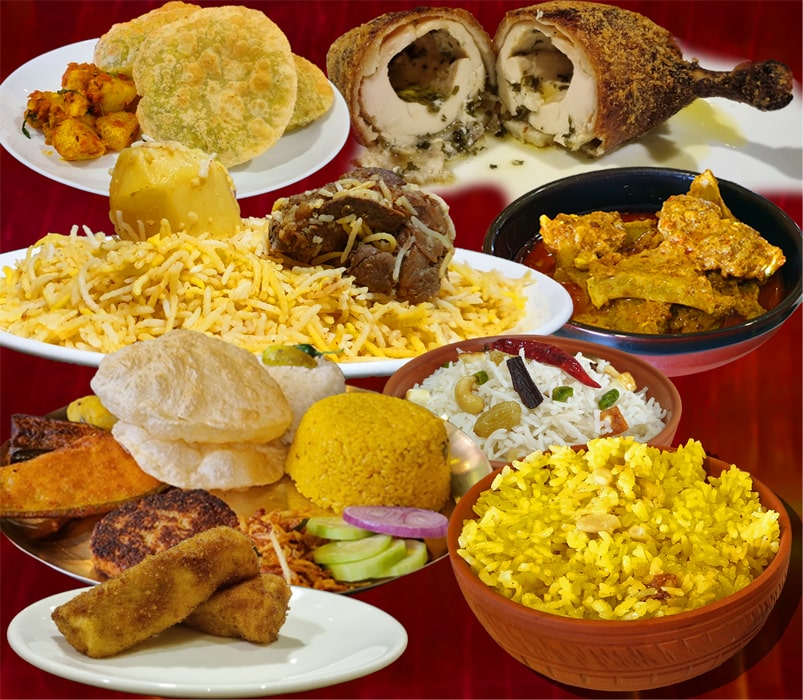
The Culinary Heritage of Bengal
Kolkata’s food can be defined as unique, hybrid and inclusive. And the credit for this goes to a plethora of influences. The contributors of the city’s foodscape were many- the English, Portuguese, Dutch, Armenians, Jews, Afghans, and the Chinese, among others, each bringing their food cultures, ingredients, recipes and their distinctive cooking styles.
One of the reasons for repeated mentions of food in the literary works of Bengal from the early days was Bengal’s endowed geography, which produced rich yields of rice, vegetables, fish and milk. This gave birth to a lot of culinary experiments and gradually cooking became a form of art.
Around the late sixteenth century, the Portuguese produced a variety of cheese, pickles and condiments at their settlements in Bandel (Bandel Cheese), Cossimbazar and Hooghly. The fresh cheese gave birth to chhana, the staple ingredient in Rosogolla (Nobin Chandra Das finally gave shape to the Rosogolla in 1868) and Sandesh (Kanchagolla was the first basic Sandesh).
Around the late sixteenth century, the Portuguese produced a variety of cheese, pickles and condiments at their settlements in Bandel (Bandel Cheese), Cossimbazar and Hooghly. The fresh cheese gave birth to chhana, the staple ingredient in Rosogolla (Nobin Chandra Das finally gave shape to the Rosogolla in 1868) and Sandesh (Kanchagolla was the first basic Sandesh).
There was a time when Calcutta, a city of many firsts, was the only city with Chinese restaurants. Yong Atchew was the first Chinese to settle in Calcutta 200 years ago. The Chinese came to the city in the late 18th century to set up sugar mills in a neighbourhood called Achipur, at the invitation of the British. They then went on to make their mark in the leather industry and in dentistry. At one time every second shoe shop was owned by a Chinese and every dentist of repute was of Chinese origin. The amalgamation of the flavours from China- Canton, Peking, Hakka, Shantung and Schezwan has later emerged as Calcutta’s very own Chinese cuisine. The Indo-Chinese cuisine has the distinctive flavour of Kolkata and no visit to Kolkata is complete without a visit to China Town in Tangra, home to most of the Chinese population, as well as to the most reputed Chinese restaurants and authentic Chinese food.
In the early 19th century, Calcutta was also home to a vibrant Jewish community who made precious contributions to Kolkata’s food fabric. Shalom Cohen was the first resident Jew in Calcutta. Even today Christmas feels incomplete without the traditional Christmas cake from Nahoum Bakery. Nahoum’s Bakery was started by a Baghdadi Jew, Nahoum Israel Mordecai, in 1902. In 1916, he officially established the store at New Market, Kolkata.
In 1783, Edward (Eduardo) Tiretta was exiled from his native Venice and came to seek his fortune in Calcutta. He acquired money and bought a market (Tiretta Bazaar)- a colourful colonnaded market. The Portuguese, Jews, Armenians and Greek residents happily shopped here. Tiretta Bazaar became the backbone of commercial enterprise in the early twentieth century, attracting Chinese Hakka and Cantonese settlers who became renowned for fine handcrafted goods, especially leather products. Tiretta Bazaar (also called the Old China Market) still has a significant Chinese population and a feel of China Town. Traditional Chinese breakfast is still available for the early birds in the Chatawala Guli.
The refreshment room at Eden Gardens started in 1840, was designed by Emily Eden (sister of the Governor General Lord Auckland). It ushered in the trend of all day snacking and afternoon teas.
Nawab Wajid Ali Shah, the last King of Awadh arrived in Calcutta in 1856, with his retinue of bawarchis (cooks), khansamas (gourmet chefs) and rakabdars (chefs or masters of taste and flavour) and the famous Awadhi cuisine. The Lucknowi culinary of biryanis, pulaos, rezalas, korma, Mughlai parathas, kebabs and others have lived on with the city of Kolkata. The Kolkata Biriyani distinguishes itself as the only form of Biriyani that includes the humble potato as an essential ingredient.
The East India Company’s (EIC) presence started the process of transforming Calcutta into the London of the East. The affluent upper-class Babus were greatly influenced, and their kitchens started churning out dishes like chicken roast, mutton cutlet, bread pudding and caramel custard. The colonisers introduced ingredients like chicken, eggs, potatoes, tomatoes, green chillies, papaya, guava, cilantro and more, as well as new cooking techniques. Not to forget, the introduction of the popular brew called Cha or Tea.
At the turn of 1900, the upwardly mobile Bengali society was much influenced by hybrid food cultures. Vegetarian food was cooked by the Rannar Thakurs (mostly from Odisha), while the fancier menu was attributed to more than one cook both Hindu and Muslim (thakurs, bawarchis and rakabdars).
Jyotirindranath Tagore, brother of Rabindranath Tagore, mentions that a French cook named Catherin was hired by the Tagore household in Jorasanko to cook for guests and also for family members when they craved Western food.
Bengalis have a fetish for sweets, and it is Calcutta that became the epicentre of the proverbial sweet tooth in the mid- nineteenth century. Milk was, and still is, a revered ingredient in every Bengali household. Payesh is the most rudimentary form of sweet dish that the ancestors of colonial Bengalis prepared (Paramanna) and continues to hold centre stage in Bengali cuisine. No auspicious occasion is complete without at least a spoonful of payesh! Girish Ch Dey and Nokur Nandy, Bhim Chandra Nag, Nabin Chandra Das, K C Das, Balaram Mallick and Radharaman Mallick, Sen Mahasay are just some of the outlets which have woven magic with their sweets for decades and have earned international acclaim along the way.
Eateries started cropping up in large numbers in the latter half of nineteenth century. Park Street with its numerous upmarket restaurants catered to the refined continental taste since the British earmarked the area as the hub of their social tapestry. While many popular eateries serving English cuisine lost their popularity when the demography of Kolkata metamorphosed from post-colonial to multi-cultural, restaurants like Mocambo, Flury’s, Peter Cat and One Step Up tweaked their menus to give it a continental flavour and still have long queues of patiently waiting patrons outside their doors every weekend!
On the other hand, the sheer variety of Kolkata Street Food, ever since the colonial era, is something that demands a deep dive into; an experience that is as astonishing as fulfilling. The pleasures of outdoors and eating out meant social interactions and a welcome getaway from routine.
Many years down the line, what is known as Kolkata’s cuisine today, has been influenced by about 250 years of political, social, and cultural history. Kolkata has adopted new and contemporary trends in food and restaurants, ranging from tiny sweetmeat shops located on footpaths to fine dining restaurants. The traditional and trendy joints exist in perfect harmony.

Pure Bengali Cuisine
Bengal means fish curry and rice or precisely Maach- Bhaat. We have many types of fish and different types of curries. Shorshey baata Maach (cooked in mustard paste), Daab Chingri (cooked in green coconut), ilish maach, a particular favourite and Maach paturi (fish wrapped and steamed in banana leaf).
The next item that Bengalis adore is mutton with rice. Kosha Mangsho- Bhaat is a weekly staple for every Bengali on Sundays. Kochi pathar jhol (tender mutton of young goats) with luchi or Bengali Polao Mangsho is another hot favourite. This polao also known as basanti pulao is slightly sweeter than their namesakes in other parts of the country.
Though the Bengali is a hardcore non-vegetarian, Bengali cuisine is incomplete without some vegetarian dishes. The vegetarian dishes typical to a Bengali household include Shukto (a mild flavoured vegetable combination), Aloo posto (potato in poppy seed paste), jhuri aloo bhaja (deep fried grated potato), Khichuri (hotch potch) and Begun Bhaja (fried brinjal).
Finally, one must try a Bengali Thali served on a kansa (bronze) or clay plate. The traditional thali consists of rice, shukto, shaak, daal, bhajaa (fry), vegetable curry, fish, chingri and mutton or chicken, chutney, doi (sweet yoghurt) and misti (sweets). This thali is a must to get the real taste of Bengali cuisine.
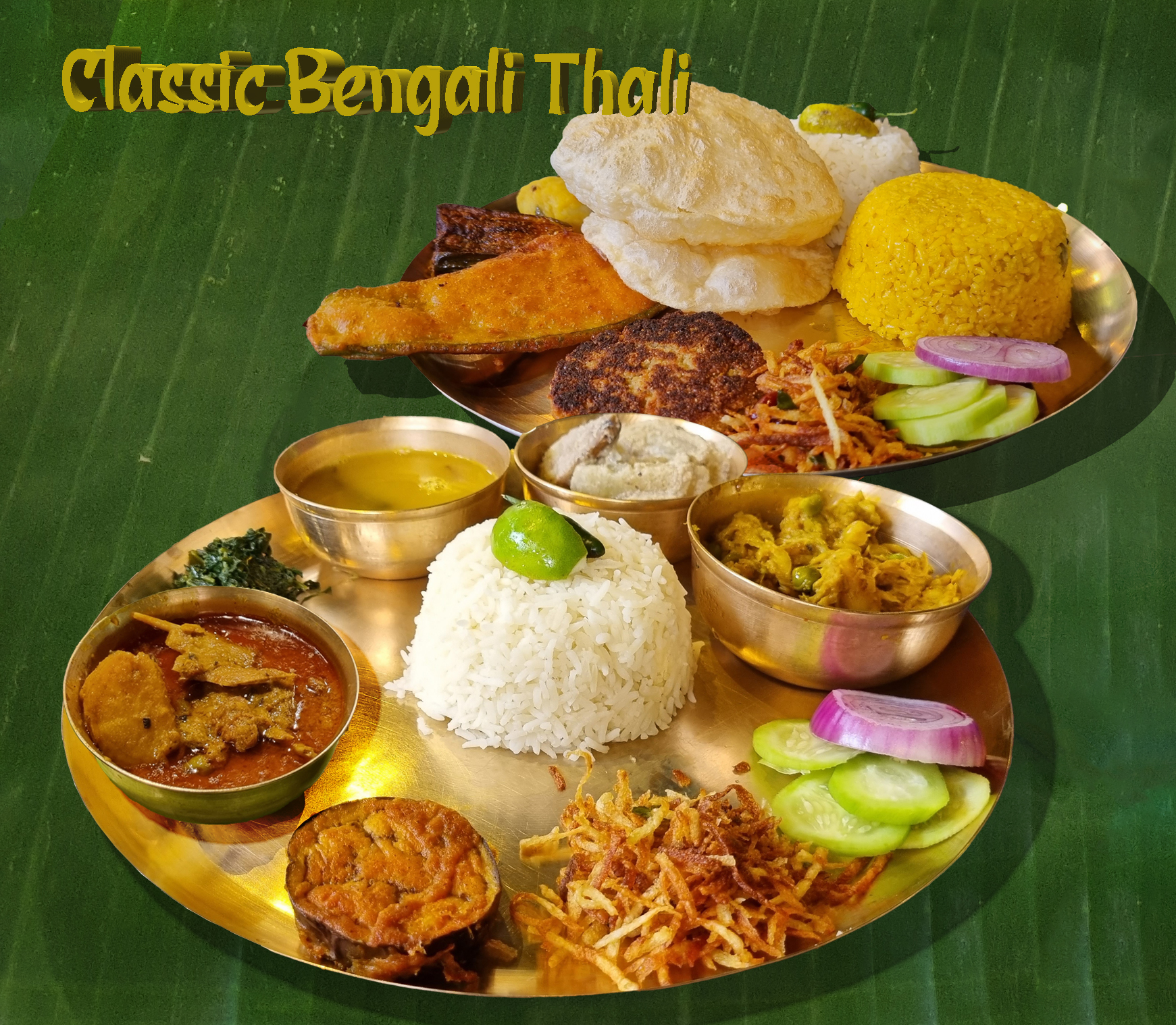

Kolkata Biryani & the Kebabs—A Heritage Saga
The majestic aroma of Biriyani drifting from the handi entices every Kolkata resident. It is an unmatched delicacy that has everyone addicted! Biryani is the undisputed king of the culinary empire! But why is Kolkata Biryani so great?
Kolkata Biryani is an age-old preparation- actually a concept! An orchestral perception of meat, saffron rice and the beloved golden potato casts a spell with its subtle yet strong fragrance that captivates the tastebuds instantly. You won’t get this golden potato in any other Biryani and to us, Biryani minus potato is blasphemous!
Born in ancient Persia as Berian pulao, biryani reached Kolkata in 1856 with Nawab Wajid Ali Shah's entourage. Thus, Kolkata biryani is a modified and refined version of Awadhi biryani. The Nawab ordered his rakaabdars (chefs) to enhance the Biryani’s taste even more. After much research, the mighty potato was selected as a suitable addition to the Biryani. Kolkata people were not much aware of this Latin American vegetable then as it was very expensive. The same tradition is maintained as the taste was much augmented with this piece of alluring aloo! Gradually this biryani became famous as “The Calcutta Biryani”.
Enjoying biryani is an art- kebabs set the mood, and only firni complements the aftertaste. Kolkata has a huge basket of Kebabs like Tikka, Reshmi, Kalmi and Tangri. But two special kebabs must be mentioned, one is the Galouti kebab and the other is kathi kebab. Initially arrived from Awadh, Galouti kebabs melt in the mouth and are matched with parathas. One must try galouti kebab with the famous ulte tawa ki paratha and then have some kathi (stick) kebabs or rolls- to complete the trail.
Some famous Biryani and Kebab Ghar:
- Aminia (near Chinar Park, 7 Kms from Convention Center) View Location
- Arsalan (near Chinar Park, 7 Kms from Convention Center) View Location
- Shiraz Golden Restaurant (near Chinar Park, 7.5 Kms from Convention Center)View Location
- Karim’s (near Akanksha Island, 6 Kms from Convention Center) View Location
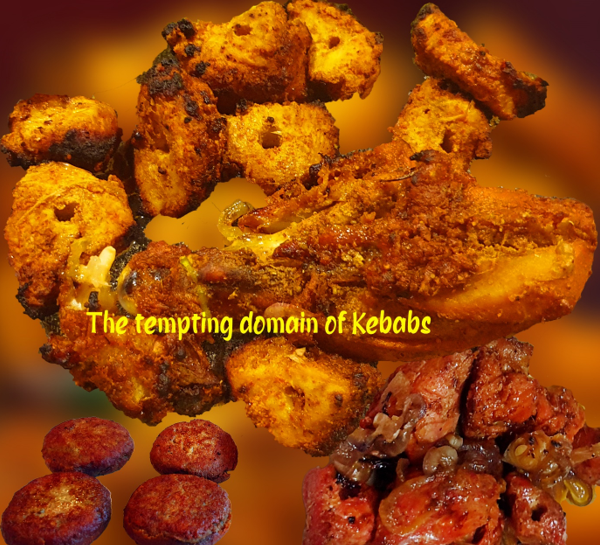
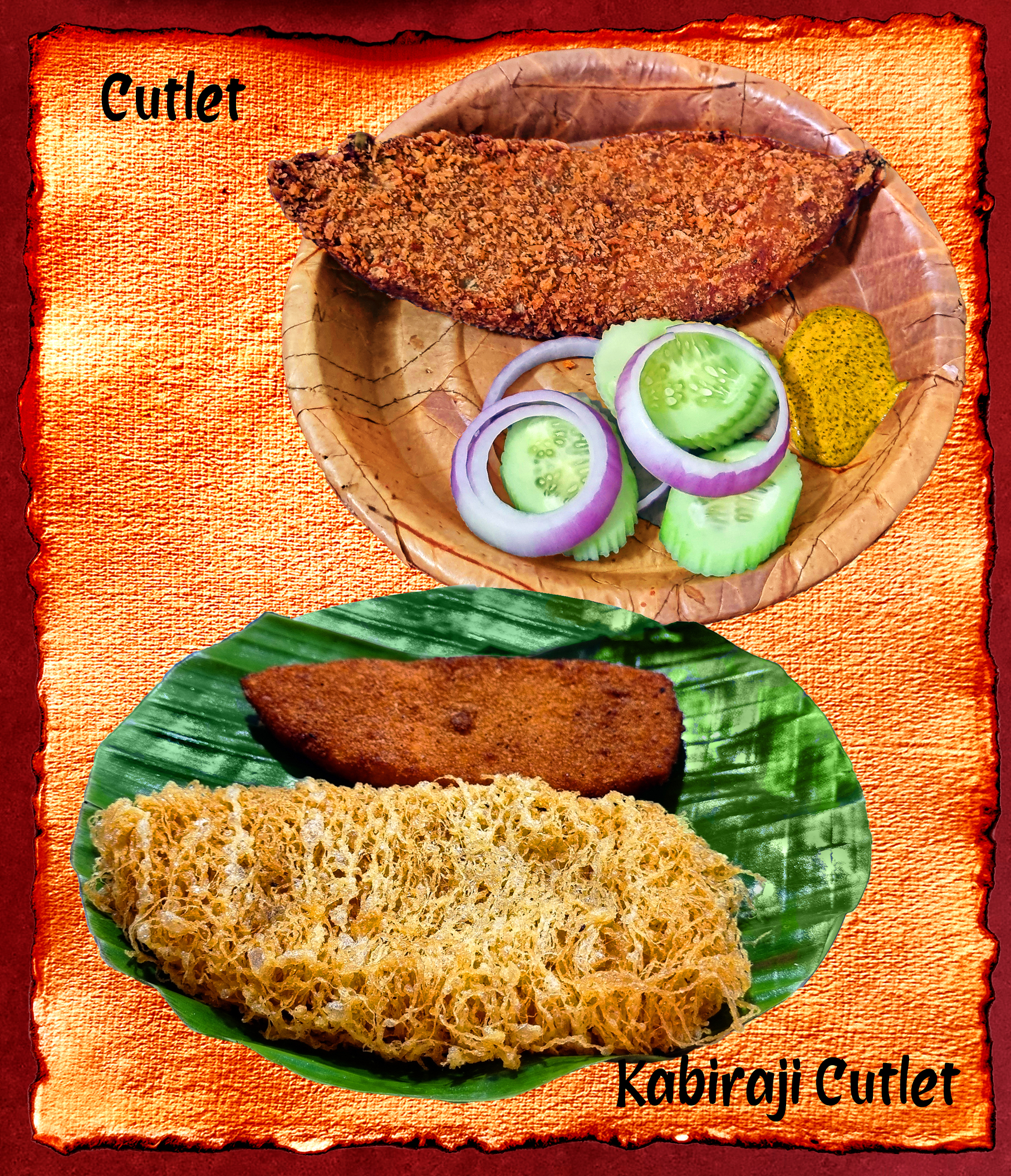
Chop – Cutlet – Fry
Bengal is a paradise for people who love fried food- the land of chop and cutlets. Though chop and cutlet are umbrella terms, they shelter many finger-licking items, such as fish fry, mughlai paratha (unique to Kolkata), and aloor chop.
The advent of chops started with the British. Perhaps the royal club culture was responsible for this. The original British chop is equivalent to today’s cutlets, and the only difference lies in their size. Cutlets are more squarish, while chops are oval or circular in shape.
Kolkata is famous mostly for vegetarian chops, even though Bengalis are known to be diehard non-vegetarians! The famous ‘Aloor Chop’, the fritter with a delicious potato filling is a must try followed by vegetable especially mochar chop (banana flower croquettes), Beguni (flat brinjal chop), and penyaji (onion pakora).
Originally, cutlets were French and known as ‘Côtelette’. Cutlets arrived in Bengal probably with the French colonials. Cutlets are mostly made of meat, but vegetable cutlets are also available.
A few cutlets that deserve special mention in Kolkata are prawn cutlets and Kabiraji cutlet. The Kabiraji Cutlet is a special attraction where a web of egg slurry is coated on the cutlet while it is fried in hot oil. This delicacy is probably found nowhere else in India. The word Kabiraji originates from this unique method of egg ‘coverage’!
And then there is the humble Shingara. Samosa or originally ‘Sambusa’ came from the Middle East and Central Asia. Though the rest of India know the water chestnut as Shingara filling, but to Bengalis, Shingara is a deep fried crunchy triangular patty filled with potatoes, nuts, peas, and occasionally cauliflower.
Fries are one of the most popular evening snacks in Kolkata and Bengal. These crispy delicacies look and taste like cutlets but are called fries because of the rich history and emotion tied to them. While chicken or mutton variations exist, fish fries are practically synonymous with Kolkata. The term "fish fry" immediately evokes images of the city's bustling snack stalls, with the scent of frying fish filling the air. For locals and visitors alike, fish fries are a must-try iconic dish, capturing the quintessence of Kolkata's incredible food culture.
The modified and enhanced version of the egg paratha once consumed by Mughal soldiers has now become Mughlai paratha and is very specific to Bengal. The dish features fried eggs enveloped in a thick, doughy paratha filled with spiced minced meat. Just one Mughlai Paratha is enough to fill one’s stomach!
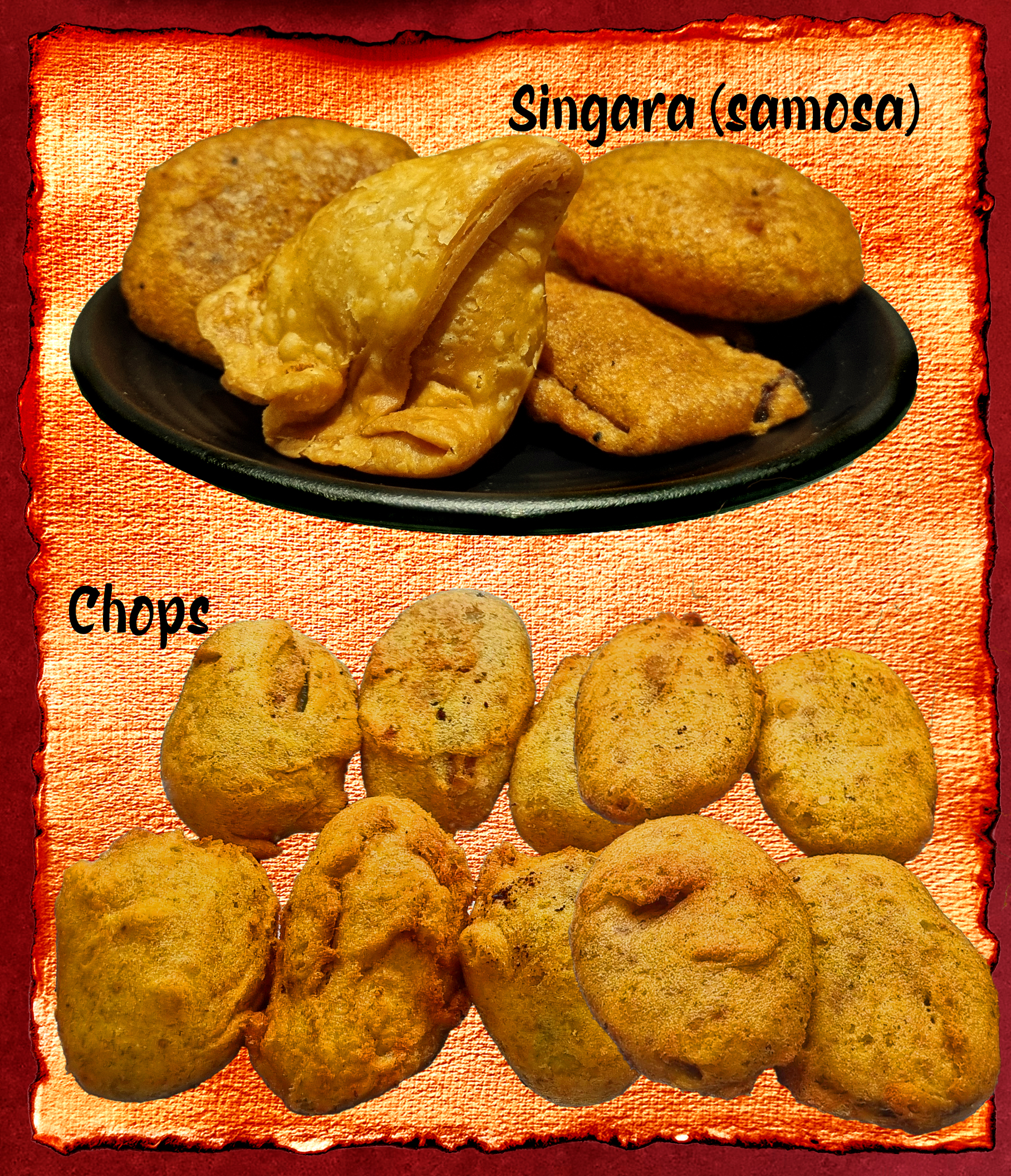
Kolkata is a City of Joy and also a city of delicious street food. There are many varieties of snacks and dishes that one can enjoy in Kolkata, the best street foods of Kolkata that should be tried including-
Phuchka- The king of street food in Kolkata, known as golgappa or pani puri in other parts of India. Filled with mashed potatoes and immersed in tamarind water, one must pop the entire thing in the mouth and enjoy the burst of flavours!
Aloo Kabli- A beloved street food from Kolkata, is a delightful snack made with boiled potatoes and kabuli chana daal tossed in a tantalizing blend of tamarind, lime, and spices…. the rest is yours!
Roll- Chow Mein- These are two more signature street food dishes of Kolkata. Roll is paratha wrapped around a filling of kebabs, eggs, onions, and sauces. You can choose from various types of fillings, such as chicken, mutton, paneer, or vegetables like aloo, and cabbage. Chow Mein, a popular Kolkata style typical stir-fried noodle dish, has found its way into the hearts (and stomachs) of food enthusiasts worldwide. In Kolkata, it has become a beloved street food, often enjoyed as a quick and tasty snack.
Ghugni- This is another popular snack made of boiled yellow and white peas, mixed with onions, tomatoes, coriander, chillies, spices, and tamarind pulp. It is tangy, spicy, and satisfying, and can be paired with bread also.
Jhalmuri- This is a simple but addictive snack made of Muri (puffed rice), peanuts, onions, tomatoes, green chillies, coriander, mustard oil, and spices. It is crunchy, spicy, and refreshing, and can be had at any time of the day.

मधुरेणो समापयेत् (Madhurena Samapayet)
No trip to the City of Joy is ever complete without our world-famous Sandesh- Rosogolla or doi- misti!
Rosogolla, the showstopper, was invented by Babu Nabin Chandra Das in 1864. Deep fried cottage cheese balls soaked in concentrated sugar syrup do not sound tempting, but the final product is an absolute must for those with a sweet tooth! Tinned Rosogollas are convenient to take away as gifts when returning home.
The other most lip- smacking treat is our famous Sandesh which is made of sweetened chhana (cottage/ home cheese). There are numerous types of Sandesh and if one visits during winter, freshly prepared date (khejur) jaggery is used to flavour the exquisite Notun Gurer Sandesh. In wintertime, Bengalis prepare many types of Pithe and Payesh which are unparallelled. Starting from rural Bengal to urban cities, all take part in this festival of sweet making, and it is a cultural icon of Bengal!
Doi (curd), especially the red variant is a unique must taste when here. The caramelised soft curd spreads in the mouth and sends a different signal to the cortex that produces endorphins!
Apart from these sweets, the list is never ending- Rabdi, Nadu (Bengali laddu), Gaja, Kheer kadam, Chomchom, Pantua, Mihidana, Bonde, Moa
Bengal’s sweets are the one must-try item which will leave one craving forever more.
So, to conclude, Bengal’s sweet is one-must-try item that left a forever impression in your mind, in your palate.

Find your Cuisine location - (distances from the Biswa Bangla Convention Centre)
Bengali cuisine @ 6 Ballygunge Place (5.5 kms) View Location
Biryani & Kebabs @ Arsalan and Aminia (6.5 kms) View Location
Aminia (near Chinar Park, 7 Kms from Convention Centre) View Location
Arsalan (near Chinar Park, 7 Kms from Convention Centre) View Location
Shiraz Golden Restaurant (near Chinar Park, 7.5 Kms from Convention Centre) View Location
Karim’s (near Akanksha Island, 6 Kms from Convention Centre) View Location
Kutlet and Kathi Roll @ Coffee House (2.1 kms) View Location
Sweet @ Misti Hub, near Gate 3 of Eco Park View Location
